Understanding pickleball calories burned
When one steps onto the pickleball court, they might see more than just a fun game unfolding; beneath the surface lies a physically engaging exercise loaded with potential benefits. Understanding the nuances of how different factors influence the calories burned during this engaging sport can empower players to approach their fitness strategy with precision and insight.
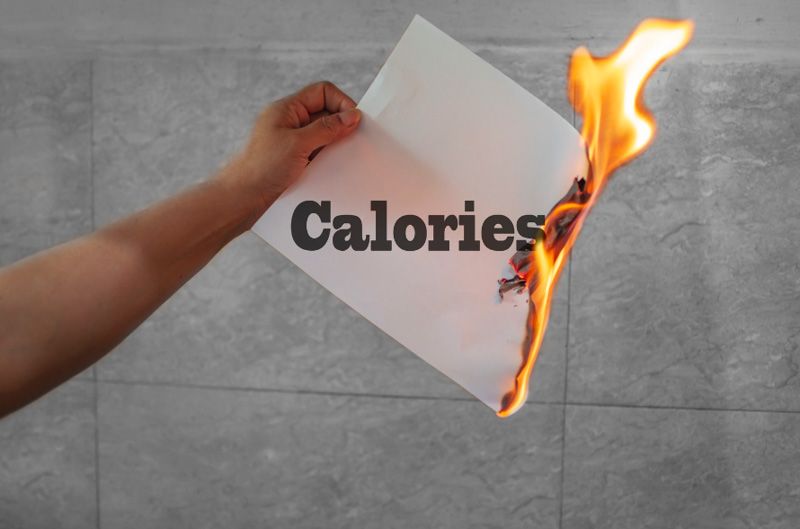
What determines calorie burn in pickleball?
1. Weight: To put it simply, the more you weigh, the more calories you tend to burn during any physical activity, including pickleball. For instance, players weighing around 150 pounds can burn approximately 165 calories in just 30 minutes of moderate-intensity doubles play. In contrast, someone tipping the scales at 200 pounds might see that figure soar to between 250 to 450 calories, especially with a vigorous singles game where the movement is more intense.
2. Intensity: How vigorous your play is doesn’t just influence performance but also the calories you burn. Playing singles typically demands more movement across the court compared to doubles, which can significantly raise the energy expenditure. Estimates suggest that a player engaged in singles matches burns between 250 to 450 calories within just half an hour, a figure that resonates with players seeking that extra calorie-burning challenge.
3. Duration: Time spent on the court also counts. A one-hour session of moderate play can lead to calorie burn ranging from 360 to 450 calories, directly dependent upon the individual’s weight. Players may want to consider this when planning their sessions, as longer play times can contribute to a more substantial calorie deficit over time.
4. Skill level and efficiency of movement: As players gain experience, their movements become more fluid and efficient, potentially resulting in fewer calories burned compared to novice players who may exert more effort in chasing the ball. This change emphasizes that skill development doesn't only enhance game tactics but can also influence calorie expenditure.
These factors not only underscore the diverse ways that calorie burn can be influenced in pickleball but also stress the importance of understanding one's personal fitness journey as they lace up their shoes on the court.
Is pickleball a HIIT workout?
The world of fitness has seen a surge in the popularity of High-Intensity Interval Training (HIIT), a style of exercise that alternates short bursts of intense activity with periods of rest. It raises an important question for pickleball enthusiasts: Is this lively game effectively a HIIT workout? The answer lies in the energy exerted in every triumphant swing and agile step to the side.
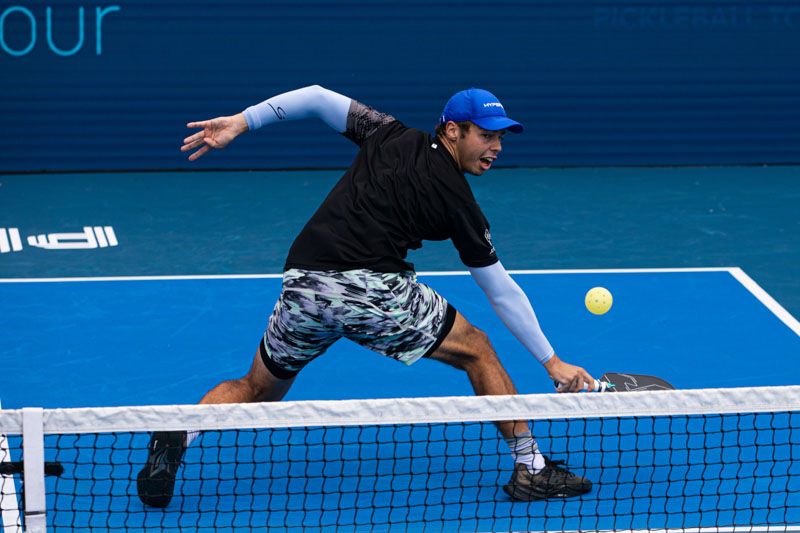
Understanding the HIIT concept
At its core, HIIT offers both efficiency and effectiveness, allowing individuals to reap maximum benefits in a shorter span of time. With pickleball being fast-paced and requiring players to alternate between high-speed plays and brief intervals of recovery, it naturally aligns with the principles of HIIT. The short yet powerful bursts of effort during matches can elevate the heart rate significantly, leading to enhanced calorie burning not only during gameplay but also long after the match concludes.
The aerobic benefit derived from engaging in such an exhilarating game contributes to improved metabolism, translating to higher calorie expenditure even during passive activities post-exercise. This connection marks pickleball as not only a great cardiovascular workout but also as an engaging HIIT option that promotes heart health and fitness longevity.
Embracing the HIIT aspect of pickleball opens up new horizons for players aiming to maximize their calorie burn while enjoying the social and recreational benefits of the game.
Calculating your pickleball calories burned
Understanding how to calculate the calories you burn while playing pickleball is crucial for those looking to track their fitness or leverage the sport for weight management. With various tools and techniques at your disposal, you can get a grasp on your energy expenditure with ease.
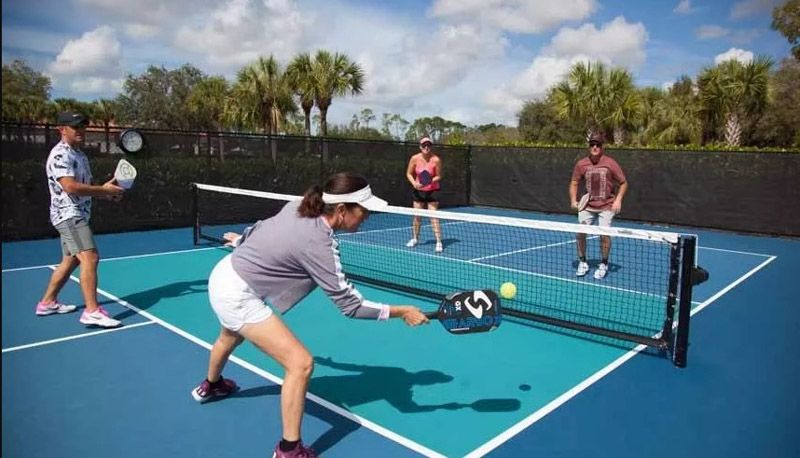
Using MET values to estimate calorie burn
One effective method for determining calorie burn involves the use of MET (Metabolic Equivalent of Task) values. For pickleball, this value is typically around 6.5, indicating a more vigorous activity level that burns, on average, around 6.5 times the calories compared to resting. To illustrate this, consider the formula for calculating calories burned:
Calories burned = (MET x weight in kg x time in hours)
For example, a person weighing 70 kg who plays for one hour can calculate their calorie burn as follows:
- Calories burned = (6.5 x 70 x 1) = 455 calories.
This foundational approach gives players a clear glimpse into how their body reacts during a game.
However, discrepancies in reported MET values for pickleball have emerged, with figures ranging from 4.1 to 6.5 depending on play intensity. This fluctuation highlights the importance of choosing a MET value that aligns with your personal playing style whether you're a casual doubles player or an intense singles competitor.
By periodically analyzing and adapting these calculations, players can track their progress and truly understand the impact of their efforts on calorie burn and overall fitness.
Fitness trackers and apps: pros and cons
In this modern age, technology has achieved remarkable strides, especially in fitness monitoring. Many players have turned to fitness trackers and apps to keep a close eye on their calorie expenditure during sports like pickleball. But are these tools entirely reliable?
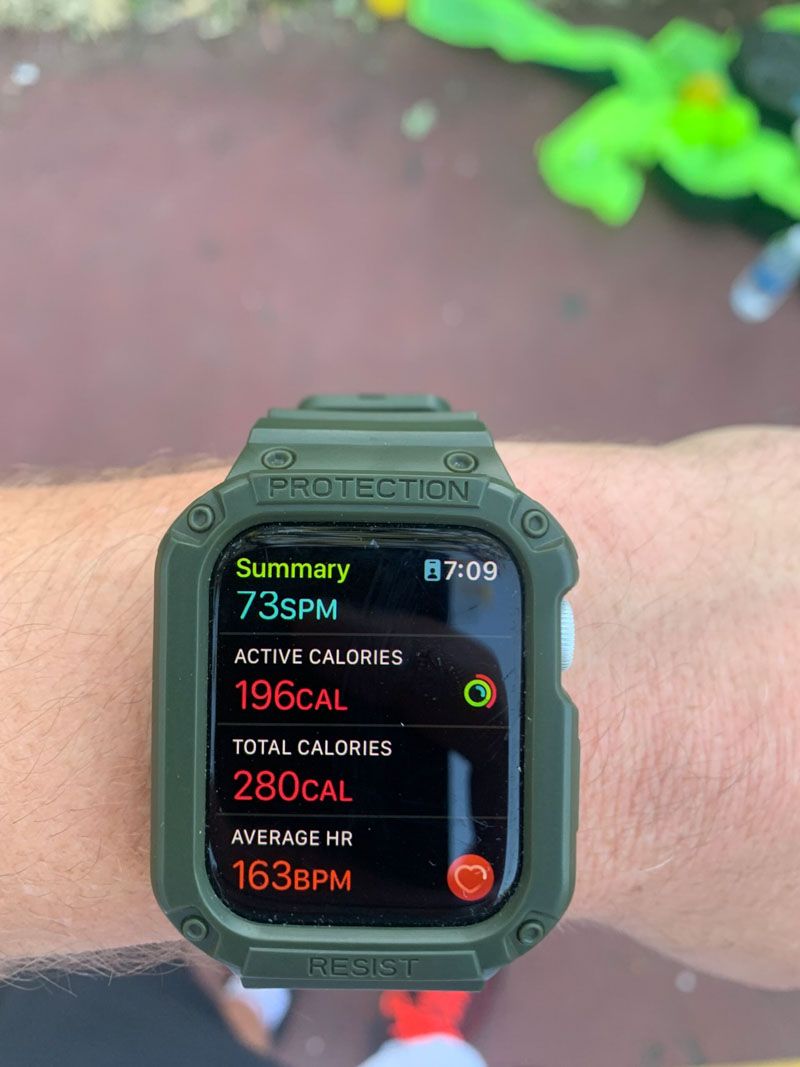
The world of fitness tracking
Fitness trackers, such as Fitbit and Apple Watch, provide real-time feedback during physical activities, allowing players to gauge their performance and stay motivated. By monitoring heart rates and estimating calorie expenditure based on movement, these devices can become invaluable assets on the path to fitness.
Yet, there are limitations to consider. Fitness trackers may not always accurately assess muscle engagement or metabolic differences, as they primarily base calculations on movement rather than exact energy expenditure. Players might find discrepancies in readings, especially between low-intensity and high-intensity play, necessitating a blend of technology and personal awareness in tracking progress.
For those using fitness apps, incorporating manual logs with detailed session information such as duration and perceived exertion can enhance accuracy. Blending the convenience of technology with personal tracking encourages a more comprehensive understanding of calories burned and provides deeper insight into individual fitness journeys.
Manual tracking: logging your pickleball sessions
While fitness trackers are a popular way to monitor activity, manual tracking offers its own unique advantages. For those who prefer a more hands-on approach, maintaining a logbook or tracking spreadsheet is a great way to connect with your fitness journey.
Building your pickleball logbook
Creating a simple pickleball logbook can be achieved through various methods, whether that is handwritten notes or a digital spreadsheet. Players might want to note the following:
- Session duration: How long did the game last?
- Intensity level: Was it moderate or vigorous?
- Perceived exertion: How hard did you feel you were working?
By documenting these factors, players can identify trends and correlate intense sessions with calorie burn while also adjusting their strategies based on the data collected. Enhanced awareness of personal performance can aid in creating a tailored training plan that meets individual needs and elevates enjoyment of the sport.
The beauty of such manual tracking lies in its adaptability players can personalize the log according to preferences, making it a more engaging experience. Knowing that each data point correlates to health improvement can inspire players to take consistent strides toward their fitness goals.
Pickleball for weight loss: a fun and effective approach
As one of the most enjoyable forms of exercise, pickleball caters not only to the heart but also to the waistline. With its dynamic nature, it serves as an effective way to manage weight while providing the pleasure of social interaction.
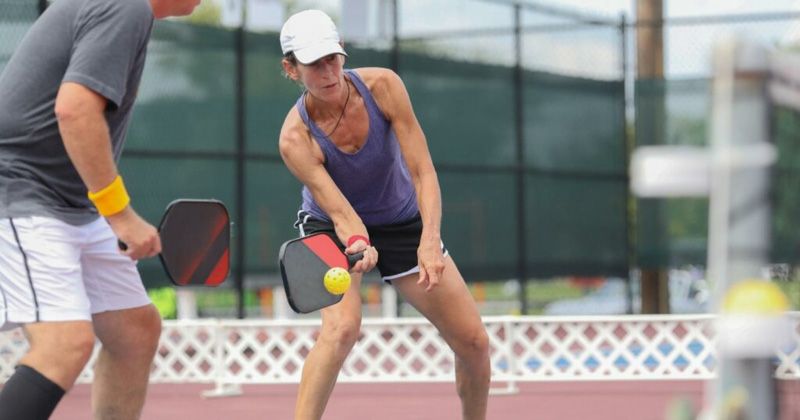
Creating a calorie deficit with pickleball
To lose weight, one must create a calorie deficit burning more calories than consumed. Pickleball comes into play as an enjoyable method for achieving this deficit. By leveraging the calorie burn potential during various game scenarios, players can scaffold their routines around their weight management goals.
For instance, let’s look at calorie expenditure in different match formats:
| Player Weight (lbs) | Calories Burned (30 mins, Moderate) | Calories Burned (30 mins, Vigorous) |
|---|---|---|
| 150 | 165 | 250-450 |
| 180 | 195 | 270-480 |
| 200 | 220 | 300-500 |
These figures enable individuals to plan their games effectively, providing an entertaining avenue to achieve a sustainable calorie deficit.
Setting SMART goals for weight loss
While the prospect of weight loss can be enticing, setting SMART (Specific, Measurable, Achievable, Relevant, Time-bound) goals can turn motivation into accomplishment. Players might aim to engage in pickleball three times a week for 30 minutes, or track a gradual weight loss of one pound per week.
By aligning fitness with structured goals, players can navigate their journey with clarity, assisting them in achieving lasting changes in their lifestyle while enjoying the camaraderie of fellow pickleball enthusiasts.
Fueling your pickleball journey: nutrition tips
Alongside pickleball, the role of nutrition cannot be overstated. Proper fuel helps maintain energy levels for optimum performance on the court, and dietary choices can significantly impact overall fitness and weight loss success.
Pre-game and post-game nourishment
Just as athletes prepare for competition with practice and focus, pre-game snacks and post-game meals contribute to enhancing performance. Players can consider the following:
- Pre-game snacks: Foods rich in complex carbohydrates, such as whole-grain bread, bananas, or energy bars, can provide the essential fuel needed to sustain a longer session.
- Post-game meals: After an exhilarating game, protein-rich foods such as grilled chicken, fish, or legumes can aid recovery by repairing muscle and replenishing energy stores.
Additionally, staying hydrated is fundamental to maintaining performance. Players should aim to drink water before, during, and after gameplay to support overall health.
The intersection of nutrition and physical activity crafts a holistic approach to fitness one that not only embodies the spirit of the game but also nurtures the bdy for prolonged performance.
Maximizing your pickleball calorie burn: tips and strategies
While pickleball is naturally a calorie-burning sport, there are several strategies players can adopt to intensify their workouts and maximize calorie expenditure further.
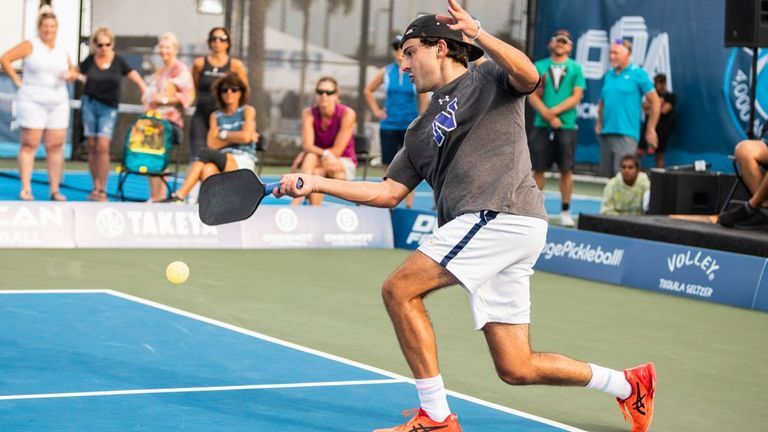
Elevate your game: tips for increasing intensity
For those seeking a higher calorie burn, consider challenging yourself with aggressive play. Focus on:
- Faster movements: Minimize elapsed time between points, transitioning quickly to position yourself effectively.
- Challenging opponents: Engage with more skilled players to increase the competitiveness and pace of the game.
Build endurance: play longer and more often
Ultimately, consistency contributes heavily to enhancing calorie burn and improving overall fitness. Players should consider extending the duration and frequency of their pickleball sessions. An example of a progressive routine could start with three 30-minute sessions per week, gradually increasing to five 60-minute sessions as stamina improves.
Advanced techniques for burning more calories
For those looking to push the envelope further, integrating advanced techniques such as using a weighted vest during play can create additional resistance and promote more considerable calorie expenditure. Participants can augment their workouts with serendipitous strength training exercises, such as squats or lunges tailored for pickleball, to increase muscle mass, metabolism, and enhance overall athletic performance.
Pickleball vs. other activities: how does it stack up?
In the vibrant realm of recreational activities, pickleball isn’t alone. It stands amidst other popular fitness endeavors such as tennis, badminton, and cycling how does it measure up in terms of calorie burn?
Calorie burn showdown: pickleball vs. popular activities
To gain insight, let’s explore some comparative data regarding the calorie burn per hour across various sports:
| Activity | Calories Burned (per hour) |
|---|---|
| Pickleball | 300-700 |
| Tennis | 400-600 |
| Badminton | 300-600 |
| Cycling | 400-800 |
| Running | 550-900 |
While these activities vary in terms of calorie expenditure, the social elements intrinsic to pickleball and its low-impact nature make it distinctly approachable for individuals of all ages, ensuring participants consistently return not just for fitness but for the joy of play and connection.
Pickleball's unique advantages: beyond calorie burn
Beyond mere calories, the allure of pickleball resides in its low-impact nature that allows players to indulge in an exhilarating game without undue stress on joints. It's an inclusive sport, making it suitable for older adults and those with varying fitness levels, promoting wonderful social benefits through community engagement. The laughter shared between points creates bonds and reduces stress alike, making the court a therapeutic escape.
Pickleball for different fitness levels and age groups
As enthusiasm for pickleball continues to grow, it’s essential to recognize how this sport can adjust to meet the needs of both beginners and experienced participants of all ages. Each player, armed with their unique capacity and goals, can thrive within the vibrant world of pickleball.
Tailoring pickleball to your fitness level
Understanding one's fitness level can offer essential insights for customizing the intensity and duration of matches. Beginners can start with shorter, less intense sessions, gradually increasing their activity level as confidence builds. Modifications might include setting slower-paced games or playing doubles to ease into competition.
Conversely, advanced players can push boundaries by incorporating specially structured drills and challenges. This structured approach augments the enjoyment of the game while maximizing calorie-burning potential.
Pickleball and aging: stay active and engaged
Moreover, as athletes age, calorie burn tends to shift. Table tennis has proven to be an exhilarating way for seniors to stay active without excessive impact on their joints. The benefits are significant: maintaining mobility, improving balance, and reducing the risk of falls become fundamental goals for older adults engaged in pickleball.
In essence, adapting pickleball to accommodate various fitness levels and age groups can create an inclusive environment that celebrates health and camaraderie, delivering something for everyone on the court.
Safety and injury prevention in pickleball
Just as the intensity of play ramps up, so too does the importance of safety on the pickleball court. With a few best practices, participants can lower the risk of injury, ensuring longevity in their pickleball journey.
Preparing for pickleball: warm-up and stretching
A well-structured warm-up routine can be the difference between a pleasant match and an unpleasant injury setback. Engaging in dynamic stretches such as arm circles, leg swings, and gentle lunges can prepare the body for the movements ahead.
Consider adopting a pickleball-specific warm-up routine that spans 5-10 minutes, focusing on muscles crucial for gameplay while enhancing flexibility and mobility.
Protect yourself: gear and hydration tips
Choosing appropriate footwear tailored to the court can significantly influence comfort and performance. Players should invest in quality shoes that offer support, cushioning, and insulation to minimize injury risk. Hydration must not be neglected; staying hydrated during play supports overall health and optimal performance.
Listen to your body: when to consult a doctor
Finally, players should listen to their bodies throughout play. Should discomfort or pain arise, it’s crucial to recognize these signals and consult a medical professional for advice. Taking preventive measures, and addressing potential injuries early on, can help maintain enjoyment in the sport while safeguarding against long-term consequences.
In the vibrant tapestry of recreational activities, pickleball shines as a beacon of caloric burning potential and social engagement. By unpacking the intricacies of calorie burning through analysis of weight, intensity, and duration, players can tailor their experiences for maximum enjoyment and effectiveness.
From embracing the essence of HIIT training to utilizing fitness trackers or manual logs, the approach to understanding energy expenditure invites all players to engage wholeheartedly in their fitness journeys. Nutrition, personal goals, and safety converge within this beautiful sport, making pickleball not just an engaging means of exercise but a fulfilling lifestyle choice that enhances relationships, health, and overall happiness. With the right strategies and understanding, players can dive into the world of pickleball and emerge not just healthier but enriched through the connections forged on the court.










